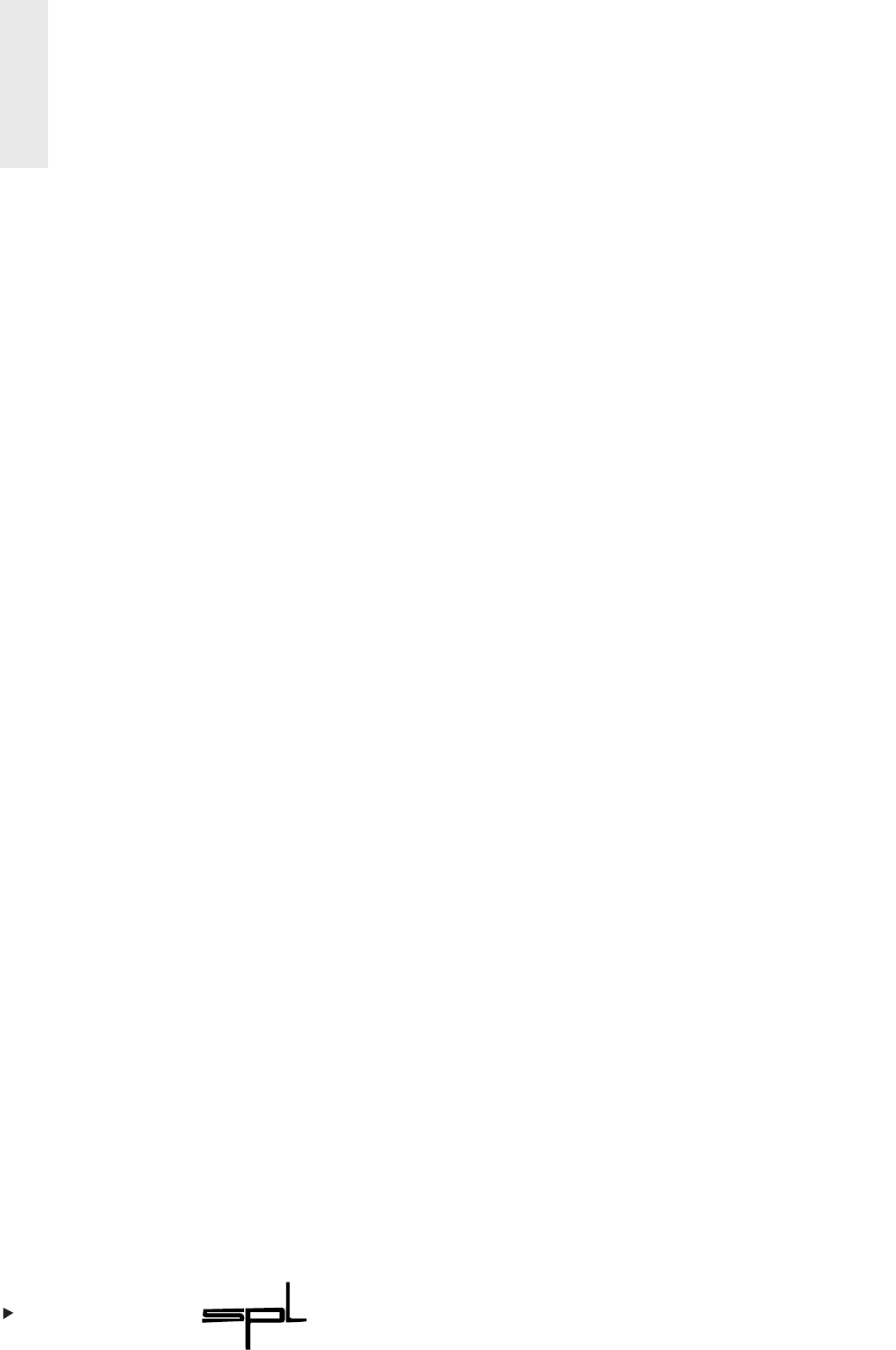
6
OPTIMIZER
addition each filter is equipped with a notch-filter. Selecting
the Notch mode overrides the mode switch selector. So com-
plex combinations of filter types can be used in the same sig-
nal path. For example, a parametric filter could be combi-
ned with a High- and Low-pass and Notch filter.
When working in Notch, Band-pass, High-Pass or Low-
Pass modes, you have a choice of roll-off characteristics
which greatly extends the tonal capabilities of the
Optimizer. For example, in the Notch filter mode, you have
control over frequency and bandwidth and also over the
steepness of the sides of the notch. The depth of the Notch is
in excess of 60dB, providing an extremely high degree of
rejection compared with conventional parametric filters.
The subjective performance of certain classic equalizers is
highly dependent on the roll-off characteristics of their filter
circuitry. These equalizers sound excellent, but their circuit
topography imposes a rather fixed character on them. By
contrast, the Optimizer´s proportional-Q parametric filter
design, combined with its switchable alternative filter
modes, gives you the flexibility to emulate many different
types of equalizer. In addition, you can set up further equa-
lization types that even the best conventional equalizers can-
not provide.
To keep the control layout simple, the BoostCut control
used in Parametric mode becomes the Gentle/Steep control
in Notch, Band-Pass, High-Pass or Low-Pass modes. Turning
the control fully anti-clockwise produces a gentle roll-off
while turning it fully clockwise produces a steep-sided res-
ponse. If the control is set in the center position, the input
signal will cancel itself out completely, resulting in no out-
put. Settings between the extremes and the center (null) posi-
tion produce further useful variations in filter slope charac-
teristic, though you may need to compensate for the level
loss incurred by settings close to the center position, by tur-
ning up the Output level control.
Selecting a steep filter characteristic produces a tightly
focused, punchy tonal characteristic while choosing a gentle
slope produces a subtle change in tonality which has the
effects of adding a sonic gloss to the programme material.
We have invented a new all active output stage approach
to mixing filters: Commonly filters in parametric or graphic
equalizers mix passively resulting in increased phase distor-
The depth of the Notch
is in excess of 60dB
The Optimizer´s proportional-
Q parametric filter design,
combined with its switchable
alternative filter modes, gives
you the flexibility to emulate
many different types of equa-
lizer.
The Boost/Cut control beco-
mes the Gentle/Steep control
in Notch, Band-Pass, High-
Pass or Low-Pass modes.
Turning the control fully
anti-clockwise produces a
gentle roll-off while turning it
fully clockwise produces a
steep-sided response.
The Optimizer has active
output stages for each filter
increasing phase stability
dramatically.
II
NNTTRROODDUUCCTTIIOONN


















